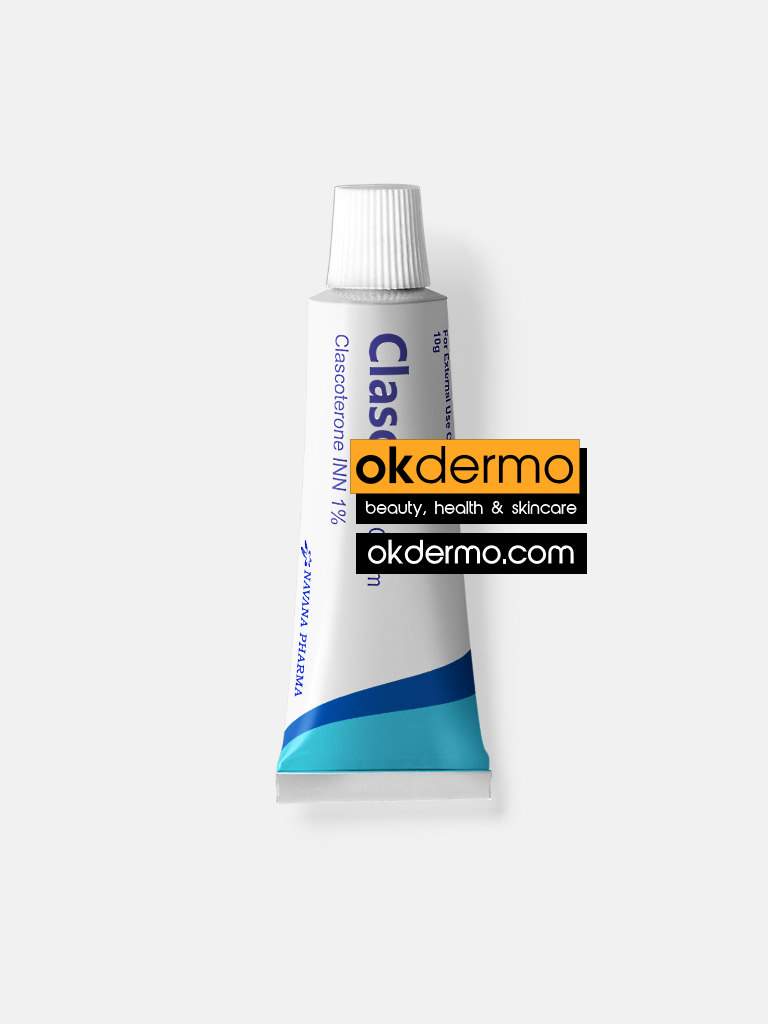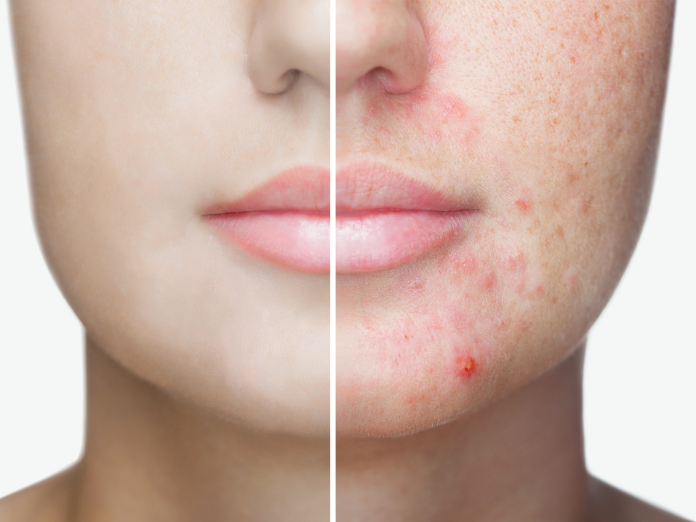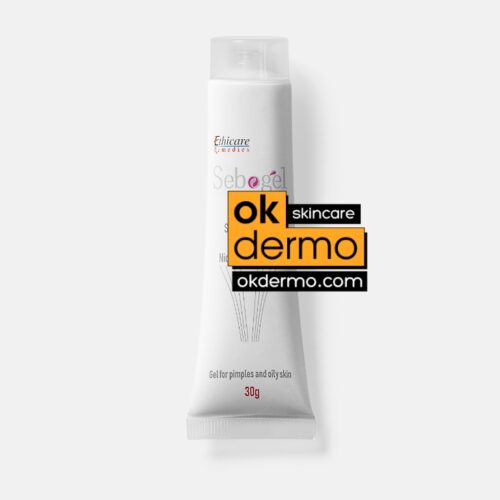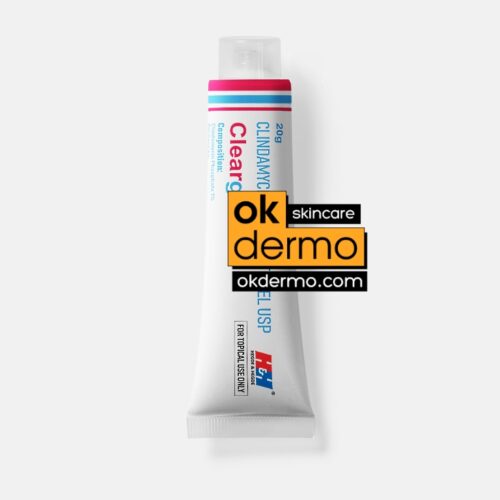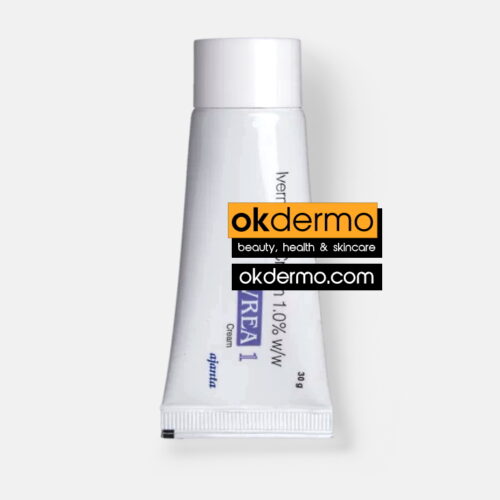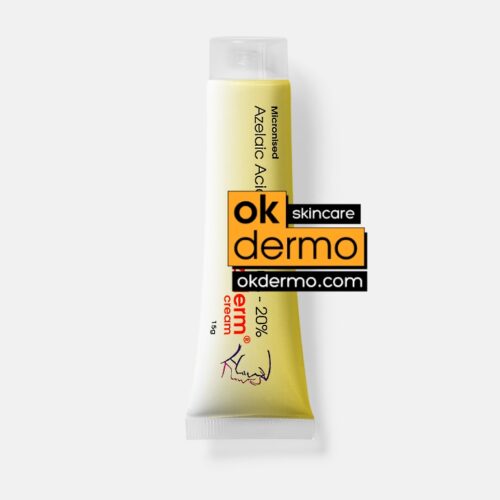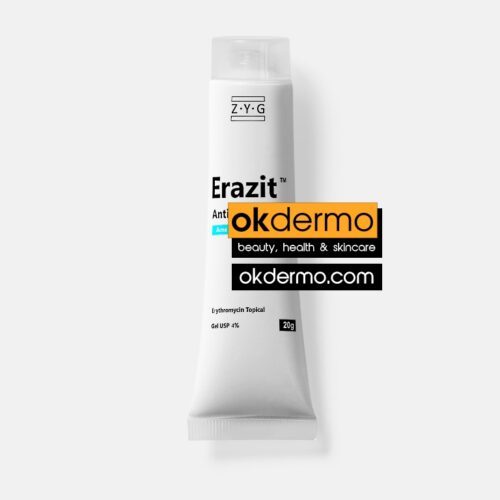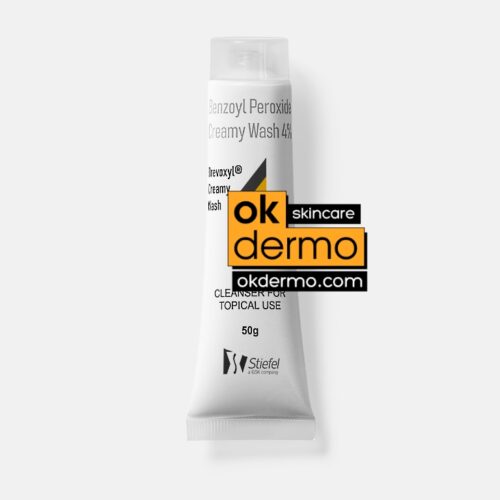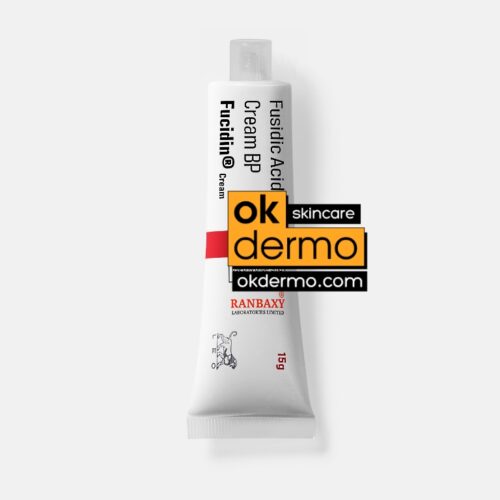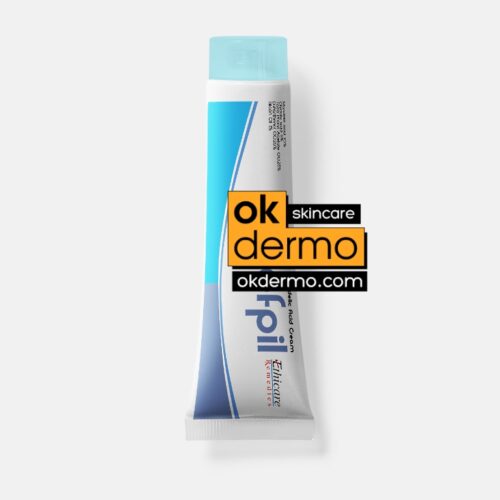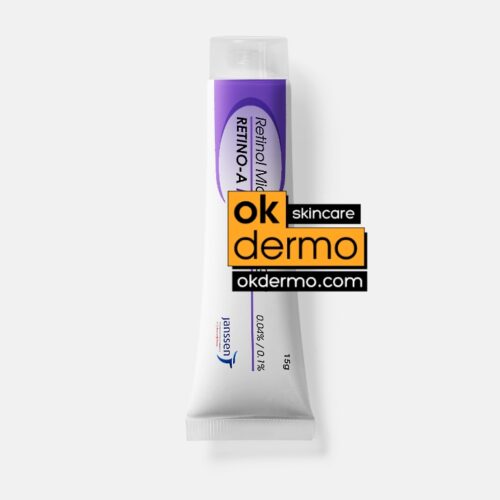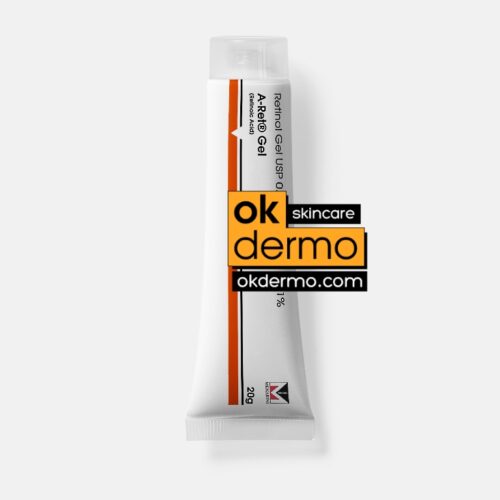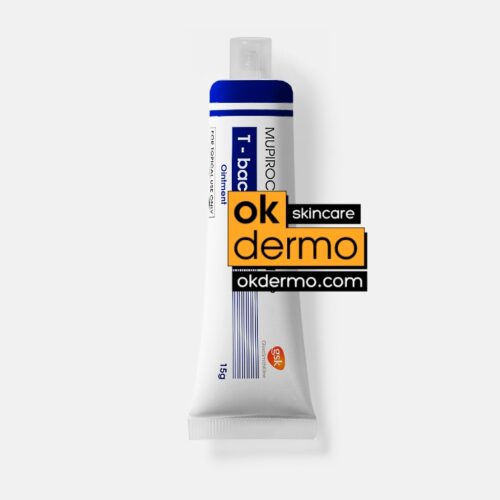Description
What is Clascon® Clascoterone Cream (Winlevi Cream)?
Clascon® Clascoterone Cream aka WINLEVI Generic (Clascoterone) cream 1% is an androgen receptor inhibitor indicated for the topical treatment of acne vulgaris in patients 12 years of age and older. It is not known if Clascon® Clascoterone Cream cream is safe and effective in children under 12 years of age.
A topical medication focused on inhibiting the effects of androgens on the cells in sebaceous glands had been missing. Androgens are the most important of all hormones regulating sebum production. Targets androgen component of acne in female AND male patients Clascoterone cream 1% inhibits the effects of androgen hormones on cells in sebaceous glands to help reduce sebum production and inflammation.
Androgens such as testosterone and dihydrotestosterone (DHT) play a key role in acne development in both sexes. Within the skin, androgens bind to androgen receptors, causing increased sebum production and inflammation.
Clascoterone 1% Androgen Receptor Inhibitor binds to the androgen receptor, competing with the binding of androgens such as DHT. Studies suggest this inhibits the action of androgen receptors on cells in the sebaceous gland, reducing sebum production and inflammation. However, the exact mechanism of Clascoterone 1% Androgen Receptor Inhibitor in acne vulgaris is unknown.
Benefits of Clascon® Clascoterone Cream
- Inhibits effects of androgen hormones on cells in sebaceous glands
- Significantly reduces inflammatory and noninflammatory lesions
- 7% to 12%of patients experienced erythema/reddening, pruritus, and scaling/dryness
- No systemic side effects related to androgen inhibition
- Approved for female AND male patients aged 12 and up
Warnings and Precautions of Winlevi cream
Local Irritation: Pruritus, burning, skin redness, or peeling may be experienced with Clascoterone cream. If these effects occur, discontinue or reduce the frequency of application of Clascoterone cream.
Hypothalamic-pituitary-adrenal (HPA) axis suppression may occur during or after treatment with Clascoterone. In the PK trial, HPA axis suppression was observed in 5% of adult subjects and 9% of adolescent subjects on Day 14. All subjects returned to normal HPA axis function at follow-up 4 weeks after stopping treatment. Conditions that augment systemic absorption include use over large surface areas, prolonged use, and the use of occlusive dressings. Attempt to withdraw use if HPA axis suppression develops.
Hyperkalemia: Elevated potassium levels were observed in some subjects during the clinical trials. Shifts from normal to elevated potassium levels were observed in 5% of Clascoterone-treated subjects and 4% of vehicle-treated subjects.
The most common adverse reactions occurring in 7% to 12% of patients are erythema/reddening, pruritus, and scaling/dryness. Additionally, edema, stinging, and burning occurred in >3% of patients and were reported in a similar percentage of subjects treated with vehicles.
Clascroterone cream can cause serious side effects, including local skin reactions. Clascroterone cream may cause local skin irritation including itching, burning, skin redness, or peeling. Symptoms of a disorder where the adrenal gland does not make enough of certain hormones (adrenal insufficiency) during treatment with Clascroterone. Your healthcare provider may stop your treatment with Clascroterone if you develop any adrenal problems.
Clascoterone for Acne
There’s a new player breaking into the acne market. Clascoterone, 1% for acne shows promise as a topical treatment. But does it work? What does the research say about Clascoterone, how does it compare to other acne medications, and what are the side effects?
Clascoterone is a new topical cream treatment for acne vulgaris. Topical treatments are applied directly to the skin, as opposed to being taken in pill form or other methods. Clascoterone cream is rubbed directly on the breakout area and can reportedly clear up acne lesion counts in as little as twelve weeks.
Before you use it, you should first wash your face, ideally with a cleanser that’s suitable for hormonal acne. Androgen imbalances can trigger balding in both men and women. As an antiandrogen product, Clascoterone works for more than just topical acne treatment but also as a hair loss treatment.
How Clascoterone Works
Cascoterone works for acne by decreasing sebum production. This is possible because it is a topical androgen receptor inhibitor, which means that it stops the glands at the site of application from receiving androgens. This causes glands to produce less oil at the application site.
In scientific terms, Clascoterone inhibits dihydrotestosterone (DHT) from binding to the sebaceous gland’s androgen receptors or sebocytes. This androgen receptor antagonist also seems to reduce inflammatory cytokine production, reducing inflammation associated with acne.
One study found that Clascoterone had up to a 30% success rate after 12 weeks. The results showed a significant reduction in both noninflammatory lesions, like whiteheads and blackheads, and inflammatory lesions, like pustules, papules, and pseudocysts.
This product is made for people suffering from moderate to severe acne. The Investigator’s Global Assessment (IGA) for acne classifies severe acne as half or more of the face suffering from larger acne eruptions like comedones, pustules, and cysts.
Clascoterone vs. Other Acne Medications
Clascoterone is different from many other hormonal acne treatments because it’s applied topically, as opposed to in a pill form. It has similar effects to spironolactone, another androgen antagonist, but a recent study found several differences:
Spironolactone only works for female patients, while Clascoterone is suitable for both males and females. Clascoterone is applied topically, while Spironolactone is taken in pill form. Spironolactone inhibits androgen throughout the body, due to being taken orally, while Clascoterone is able to target androgen receptors in specific areas.
Beyond spironolactone, other comparable medications would be topically applied gels, creams, and serums that contain standard acne treatment items: salicylic acid, benzoyl peroxide, or even tea tree oil. The major difference between these and Clascoterone is that alternative treatments target the surface of the skin, aiming to exfoliate, reduce bacteria, or dry out oils. However, the goal of Clascoterone is to block androgen receptors, stopping oil before it starts.
Side Effects of Clascoterone / Winlevi Cream Generic
In a 9-month study of long-term adverse events, the possible side effects were mostly mild and did not seem to interfere with treatment success. The study found no serious complications, but mild skin reactions did sometimes show up on the application site or on the vehicle arm that applied the cream.
Is Clascoterone right for you?
After all this promising information, you’re likely wondering if Clascoterone is right for you. While it seems like an exciting new product full of potential, keep in mind that this novel topical androgen receptor inhibitor is brand new. This means that there are simply some things about it that we don’t know yet, and your dermatologist won’t have long-term experience with recommending it.
This isn’t necessarily a point against Clascoterone, just a consideration to discuss with your dermatologist. When it comes to the topical treatment of acne vulgaris, a treatment regimen usually consists of decreasing oil production, balancing the microbiome, and calming inflammation. However, in cases of hormone imbalance, Clascoterone could offer an alternate option that targets androgens, not skin surface.
As the U.S. Food and Drug Administration finalizes its approval of Clascoterone. As this new drug with few clinical studies hits the market, it shows excellent potential for treating acne at the root… or in this case, the receptor.
Sources
- Zouboulis, C. C. (2009). Sebaceous gland receptors. Dermato-endocrinology, 1(2), 77-80.
- Hebert, A., Thiboutot, D., Gold, L. S., Cartwright, M., Gerloni, M., Fragasso, E., & Mazzetti, A. (2020). Efficacy and Safety of Topical Clascoterone Cream, 1%, for Treatment in Patients With Facial Acne: Two Phase 3 Randomized Clinical Trials. JAMA Dermatology.
- Agnew, T., Furber, G., Leach, M., & Segal, L. (2016). A comprehensive critique and review of published measures of acne severity. The Journal of clinical and aesthetic dermatology, 9(7), 40.
- Rosette, C., Agan, F. J., Mazzetti, A., Moro, L., & Gerloni, M. (2019). Cortexolone 17α-propionate (clascoterone) is a novel androgen receptor antagonist that inhibits the production of lipids and inflammatory cytokines from sebocytes in vitro. Journal of drugs in dermatology: JDD, 18(5), 412-418.
- Mazzetti, A., Moro, L., Gerloni, M., & Cartwright, M. (2019). Pharmacokinetic profile, safety, and tolerability of clascoterone (cortexolone 17-alpha propionate, CB-03-01) topical cream, 1% in subjects with acne vulgaris: an open-label phase 2a study. Journal of drugs in dermatology: JDD, 18(6), 563-563.

